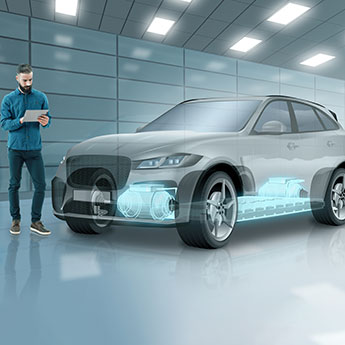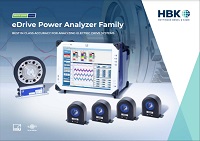How Durability Testing Increases Reliability of Electric Machines
Durability testing, an essential stage in the development of any electrical machine, enables engineers to understand and confirm how a machine holds up to real-world use. This entails long-term electrical machine testing. Typically, durability testing is carried out for a defined minimum period to ensure the product survives without failure, or for however long it takes for the machine to break down and repairs are necessary.
How to Determine Durability
Durability measures the length of a product's life. There are several measures of durability in use, including years of life, hours of use, and number of operational cycles. Reliability testing ensures that product quality is consistent with its specifications throughout the intended lifecycle. This testing can be done at both the design and production levels: to identify and mitigate flaws in design; or to correct potential failures in manufacture.
Reliability Testing with HBK
The HBK Durability Testing solution validates and verifies the properties and functions of electrical components and sub-systems. During the test procedure, “condensed” parameters are recorded, like RMS, P, η, λ, P_mech. Measurements are taken according to a time-grid for the test, at intervals that may range from once per several seconds to multiple times per second. Raw data can be recorded either in fixed time intervals for a short period (to understand the “aging” of the motor”), or based on trigger conditions (e.g. a motor breakdown, and to understand this with pre-trigger), or both.
In addition to recording measurements, Perception software—used to analyze the results of durability testing—has a database of standard formulae that can be calculated and stored in real-time. The software is easily adapted to custom configurations and can be extended with additional user-specific formulae as required.
Automotive Durability Testing
In the automotive industry, durability testing supports the component and OEM manufacturers' evaluation of vehicles, to determine the expected service life of components or sub-systems. These assessments are made at the test bench by replicating real-world conditions and stresses that the vehicle would experience through actual use. Variations on the terminology include accelerated vehicle testing, full-vehicle durability testing, high-performance durability testing, and so on – but these each follow the same basic principles.
Regional Variations in Vehicle Durability Tests
In China there is a national durability testing standard for all electric motors that are used in electric cars. The standard GBT 29307 describes the test procedure, setting a minimum of 402 hours continual testing. In practice, many customers run durability tests for up to 1000 hours. Customers for durability testing include UAES, DEKRA and ATMO in China, and Volkswagen in Germany.

Basic requirements for Durability Testing
Typical requirements for measurement configurations are:
- a sample rate of 100 to 200 kS/second
- measurement and data collection from 6 to 18 power channels simultaneously, with voltage up to 1000 Volts and current up to 1000 Amps
- Single drive setup, motor-generator setup or more complex like eCVT
- additional signals such as temperature and/or vibration
- CAN bus inputs
- transfer of results to the test automation system.
Handling Derived Data
The most popular data handling methods used in durability testing are:
- continuous streaming to EtherCAT
- continuous streaming in PNRF format, with a selectable storage rate.
For measurements that are taken at slower rates, the data handling options include:
- slower than 1/s - continuous storage in an EXCEL or CSV file
- from 0.1 /s to 20/s - continuously retrieval via RPC or UDP.
The HBK solution can also handle these methods simultaneously and in combination.
Raw Data Handling
Data can be stored multiple times for each selectable time block (a block may run from seconds to a few hours). Storage can be repeated at any given time interval – the typical choice, however, is once per day.
(Where the data volume for a block time exceeds the memory capacity of the sweep, HBK recommends using a continuous recording.)
Interested in Durability Testing?
The HBK Durability Testing solution with Perception software is based on unmatched expertise in electrical machine and powertrain testing. Basic test processes in automotive reliability testing effectively follow those of power grid fault monitoring, and we have a wealth of experience in grid testing too. Contact one of our sales representatives today for more information.

